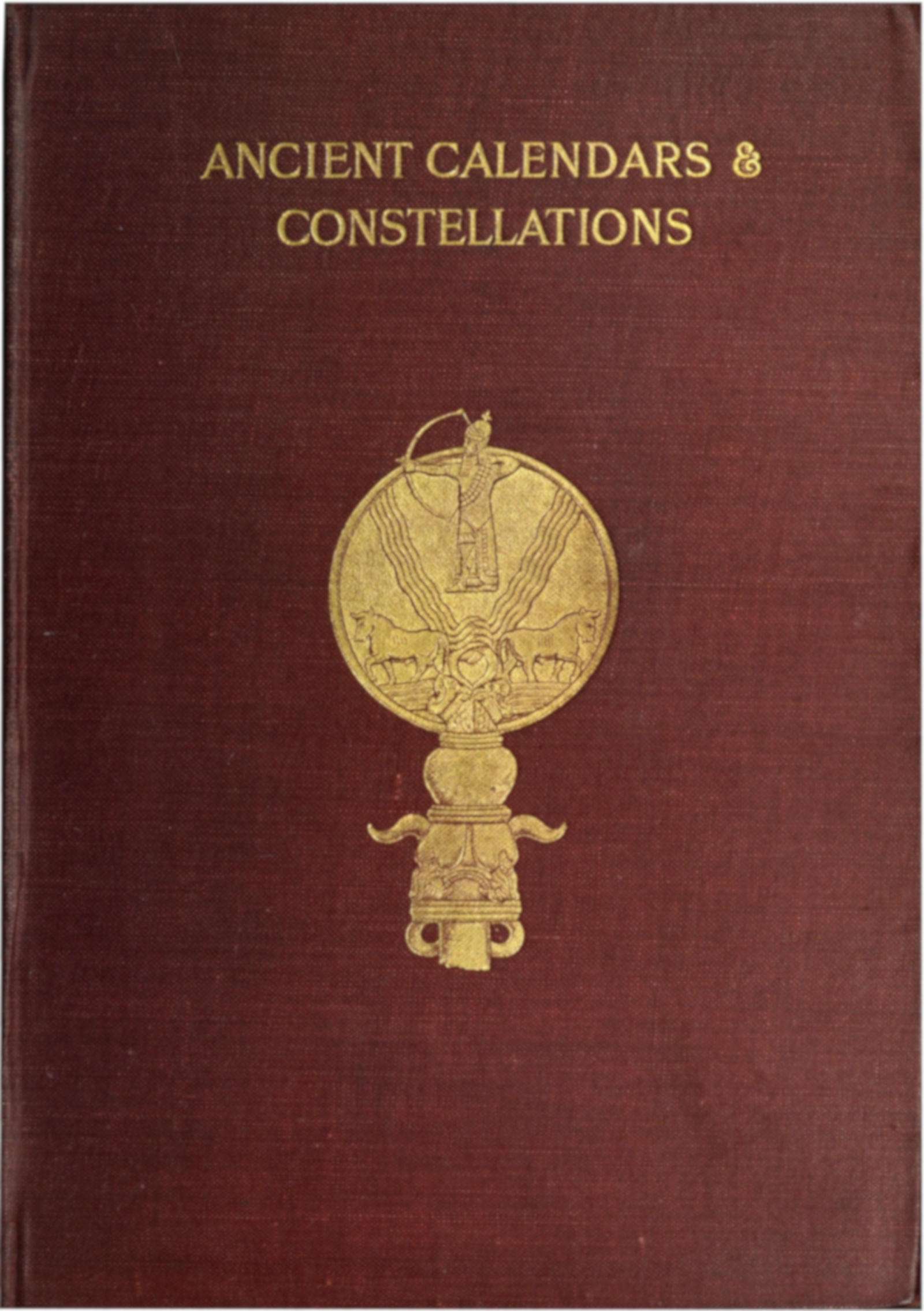Ancient calendars and constellations
Play Sample
PREFACE
The Papers here collected and reprinted, with some alterations, were not originally written as a series; but they do, in fact, form one, inasmuch as the opinions put forward in each Paper were arrived at, one after the other, simply by following one leading clue.
This clue was furnished by a consideration of statements made by Professor Sayce in an article contributed by him in 1874 to the Transactions of the Society of Biblical Archæology
At page 150 he thus wrote:—
“The standard astrological work of the Babylonians and Assyrians was one consisting of seventy tablets, drawn up for the Library of Sargon, king of Agane, in the 16th century B.C.”
And again at page 237:—
“The Accadian Calendar was arranged so as to suit the order of the Zodiacal signs; and Nisan, the first month, answered to the first Zodiacal sign. Now the sun still entered the first point of Aries at the vernal equinox in the time of Hipparkhus, and it would have done so since 2540 B.C. From that epoch backwards to 4698 B.C. Taurus, the second sign of the Accadian Zodiac, and the second month of the Accadian year, would have introduced the spring. The precession of the equinoxes thus enables us to fix the extreme limit of the antiquity of the ancient Babylonian Calendar, and of the origin of the Zodiacal signs in that country.”
Not many years after this sentence had been penned, archæologists, as the result of much evidence, came to the firm conviction that the date of Sargon of Agane was far earlier than had been at first supposed; and it was placed by them, not “in the 16th century B.C.,” but at the high date of 3800 B.C.
It was in endeavouring to account for the choice by Accadian astronomers of Nisan as first month of the year, and of Aries as first constellation of the Zodiac, at a date when that month and constellation could not have “introduced the spring,” that a possible solution of the difficulty presented itself to my mind—namely, the supposition that the Accadian calendar had been originated when the winter solstice, not the spring equinox, coincided with the sun’s entry into the constellation Aries. This coincidence took place, as astronomy teaches us, at the date, in round numbers, of 6000 B.C.
In the first Paper here reprinted this supposition was put forward; and in the course of following, as above stated, the clue afforded by it, the various subjects discussed in successive Papers claimed always more insistently my attention, as by degrees detached pieces of information concerning the calendars of ancient nations came to hand, and fitted themselves, like the pieces of a dissected map, into one simple chronological scheme.
The study of calendars marked by Zodiacal constellations necessitates an acquaintance with the position of those constellations as they were to be observed through the many ages during which they held the important office of presiding over the year and its changing seasons. Such acquaintanceship would have involved very careful and accurate calculations were it not that, by the help of a precessional globe, it was possible by easy mechanical adjustment to see, without the trouble of thinking them out, what were the changes produced in the scenery of nightly skies, millennium after millennium, by the slow apparent revolution of the “Poles of heaven” through the constellations—a revolution referred to by English astronomers as “the precession of the equinoxes,” and more graphically and epigrammatically by French astronomers as “le mouvement des fixes.”
In the second part of this book diagrams have been given, made from a precessional globe, and in the explanatory notes which accompany the Plates attention has been directed, not only to the chronological problems which may be discussed with great advantage, as I believe, by the help of such a globe, but also to various astronomical explanations of ancient myths which occurred to me in the course of studying the position of Zodiacal and extra-Zodiacal constellations at different ages of the world’s history.
I can only read Classic and Oriental myths in translations, and I feel very sure that if any of the astronomic explanations here suggested for ancient legends should prove to be the right ones, scholars versed in the original languages in which these legends were written, if they supplement their linguistic knowledge by astronomic considerations, will be able quickly and with ease to develop the suggested explanations much further than it has been possible for me to do; and explanations of other astronomic myths—astronomic, that is, and not merely solar myths—will doubtless come to their minds as they follow similar lines of enquiry.
The steps by which travellers arrive at a far-reaching view are often very steep and arduous.I fear that many readers of this book will find the separate Papers in it dull and technical in themselves; but if they be considered only as steep and roughly-cut steps leading up to vantage points of chronological and historical observation, I believe that the ruggedness of the path will soon be forgotten in the absorbing interest of the results to be obtained by following it.
